How do you know your marketing campaigns are working? Split testing! If you don’t split test, you miss out on leads and sales without even knowing it.
Split testing shows you if your marketing is working and where you can make changes to improve its effectiveness.
In this guide, we’ll show you why split testing is important and how to create a split test to improve your lead generation and returns on your marketing efforts.
Table of Contents
- What is split testing
- Why run a split test
- Split testing with OptinMonster
- Split testing with Google Optimize
What Is a Split Test?
A split test is a method of testing multiple versions of a website (or individual elements of a website) against each other to see which works best.
New to split testing? Let’s start with a few definitions related to split testing.
Just like in a science experiment, a split test starts with a control: the original version of whatever you’re testing.
To start the split test, you need a variant to test against your control. The variant is a changed version of your control, and you test them against each other to see which performs better.
What do we mean by performing better?
In a split test, the purpose of the test is to boost your conversions. A conversion is any action you want someone to complete, like signing up for your email newsletter or buying your product.
Split testing is an essential part of conversion optimization, which is improving your web pages and marketing to increase the rate at which people complete the desired action and convert.
Another common name for a split test is “A/B test.” With an A/B test, you divide your web traffic so 50% of your visitors see the control and 50% see the variant.
If you want to test more variants of a single element (for example, three different button colors), run an A/B/n test. This divides your traffic into multiple equal segments and shows one variant to each segment.
Most professional conversion optimizers recommend testing no more than four variants at once. If you have a low-traffic site, it’s better to keep it simple, or it’ll take too long to get results.
What if you want to change multiple aspects of your web page or opt-in form? You need to do multivariate testing, explained in detail in our split testing vs. multivariate testing guide.
Why Should You Run a Split Test?
Most marketers run split tests because they suspect an aspect of their marketing isn’t working well or think they can get even better results, such as more leads or sales, from a page.
Split testing has many potential benefits. These include:
- Getting rid of any uncertainty about marketing campaigns by eliminating guesswork
- Learning how customers actually respond
- Gaining unexpected insights that can drive improvements across the company
- Creating better and more effective content
- Maximizing web traffic and visitor engagement
- Reducing risk by testing changes before making them permanent
- Improving revenue. If you get more leads and sales with small changes, your business becomes more profitable.
Overall, split testing is a cost-effective and easy way to improve your website and marketing.
Preparing for Your First Split Test
Before you start your first split test, you need to know what you can test. In general, includes headlines, page copy, button text, colors, forms, images, social sharing buttons – basically anything appearing on a web page or landing page.
If you do email marketing, you can also split test email subject lines, copy, and images. And in both cases, you can test your call to action.
To ensure that your split tests are effective, there’s a tried and true procedure you should follow. It goes like this:
Step 1: Observe and Collect Data
Find out what’s happening on your site or with any element you want to test right now, like your opt-in campaigns. You’ll need that data in the next step, so this phase is important.
A key place to collect data is your web analytics account, where you’ll pay attention to top landing pages, entrances and exits, bounces, and, if relevant, conversions.
If you use OptinMonster linked to Google Analytics, you can see conversion rates for your opt-in campaigns. As you’ll learn later, you can also split test and optimize these campaigns.
Step 2: Form a Hypothesis
A hypothesis is an idea about why you see these particular results and how to improve them. A good conversion optimization hypothesis states a specific goal and how to measure success.
Here’s an example of how you’d put that together:
- Issue: Not enough people are clicking the “submit” button on our email newsletter sign-up form. We think this is because the button doesn’t stand out against the background design.
- Proposed solution: We believe if we lighten the background so the button is more visible we’ll get an increase in sign-ups.
- Success metrics: We’ll know this works when we get a 5% increase in sign-ups in the next 14 days.
Step 3: Run Your Test and Collect Data
Use the data you collected in the first step as a baseline for measuring your results.
Now, let’s look at how you can run split tests in OptinMonster and Google Optimize.
How to Set Up a Split Test in OptinMonster
We understand everyone learns a little differently. That’s why we added this video tutorial for more visual learners:
But for the written comprehensive guide, keep reading!
Split testing your opt-in campaigns is pretty easy if you use OptinMonster.
Go to your dashboard, find the campaign you want to test, and click on the three dots on the right to find the dropdown menu. Select “A/B Split Test” to go to the split test creation screen.
Give your split test a name and add some notes about the test, such as details of what you plan to change. That’ll be useful later, especially if you run a lot of split tests.
Click the Create Split Test button.
Then, choose the element you want to modify. Remember, there will only be ONE change for each variant. Otherwise, you won’t know what worked.
Give it some time, then check your dashboard to see what results you get.
When you have a clear winner, click the “Make Primary” button so all your visitors see that version of your opt-in campaign.
Learn more in our tutorial on creating a split test in OptinMonster.
Of course, split testing is an ongoing process for most marketers, so you’ll likely run lots of tests to optimize everything you can – and then you’ll start again.
How to Run Split Tests with Google Optimize
Google has a free A/B testing tool called “Google Optimize.” As with all Google products, you log in with Google to set up your Google Optimize account.
Then, you need to set up a container, which is Google-speak for a collection of configuration information for your website.
You also need a Google Analytics account so you can link Optimize to your existing Analytics web properties.
Next, install the Google Optimize code on your website.
If you use WordPress, you can easily add Optimize to your site with the MonsterInsights Google Optimize addon – no need to edit any code or hire a developer.
Now, here’s how you create a split test with Google Optimize.
Once you’re logged in, click the container name for your website, then tap the “Create Experiment” button.
Give your experiment a name and enter the name of the webpage you want to test.
Choose the type of test you want to run. In addition to A/B tests, Google Optimize lets you run redirect and multivariate tests.
Click the “Create” button.
Next, go to the test details page, where you’ll add variants, objectives, and targeting.
Google will prompt you to install the Google Optimize extension for Chrome, which you’ll need for on-screen experiment editing.
Click on the element you want to edit, and you’ll get a drop-down menu of options. In this test, we edited the headline. Here’s the original:
And here’s the variant:
Click Done » Save » Done to save your variant and return to the Optimize dashboard. You’ll notice that Google Optimize has automatically divided your traffic in half.
Next, set an objective for the test. This is one of the goals you’ve already set in Google Analytics. Since you can only have a limited number of goals in a single Analytics view, you may need to set up additional views with their own goals in Analytics to make it easier to run multiple tests.
Include a description of your test and results in the space provided, then save the test. Once you’re happy with what you’ve entered, click the “Start Experiment” button to run your split test.
Depending on your site’s traffic, you’ll want to run your experiment for at least a couple of weeks or until you have measurable results. As the screenshot below shows, it’s too early to measure results for this Google Optimize test. We’ll talk more about that below when we cover split testing best practices in the next section.
Split Testing Best Practices
Here are some additional tips for successful split testing.
First, make sure you’re testing the right pages and elements. That’s why it’s so important to collect data. When you have analytics data, you’ll know which pages help people take action and convert, and which don’t.
If a page has no impact on conversions, why bother testing it? On the other hand, if there’s a page that most people visit before buying, then that’s definitely worth testing and improving.
If you’re planning to test multiple pages, then prioritize the ones with the greatest potential to affect leads and sales.
You need to run your split test long enough and have the right A/B testing sample size to get reliable results.
In a nutshell, the lower your traffic, the longer you need to run your split test.
Visual Website Optimizer has a calculator for working out the reliability of your data based on visitor numbers and conversions:
It’s also important to measure how sure you are that making a change will bring results, called the confidence rating. This should be at least 95%.
When split testing, make sure you’re comparing like with like.
For example, when testing opt-in campaigns, there’s little point in comparing a welcome gate with an exit-intent popup because they do different things and visitors see them at different times. Instead, compare two versions of your welcome gate or two versions of your exit-intent popup.
Finally, the more you test, the more improvements you can make. Each successful test gives you a new baseline from which to run a new test.
Here’s one of our favorite split testing examples:
Social Media Examiner split tested its opt-in forms regularly to increase its subscribers by 250,000, a 66% increase in daily subscriber signups. The site continued tweaking to see what other improvements it could engineer.
8 Split Testing Tools
In addition to Google Optimize and OptinMonster’s built-in split testing tool, there are several other A/B testing tools you can use to run a split test, including:
- CrazyEgg
- HotJar
- Optimizely
- Unbounce
- Visual Website Optimizer
- ABPress Optimizer
- Title Experiments (here’s a tutorial)
Now you know why it’s important to split test your opt-in campaigns and web pages and how to do it so you can improve your marketing based on data, and not guesswork.
To make sure you’re on the right track, see our list of a/b testing best practices. Plus, here are some more A/B tests you can run on your popups to make them even more effective.
Remember to follow us on Twitter and Facebook for more free marketing guides.


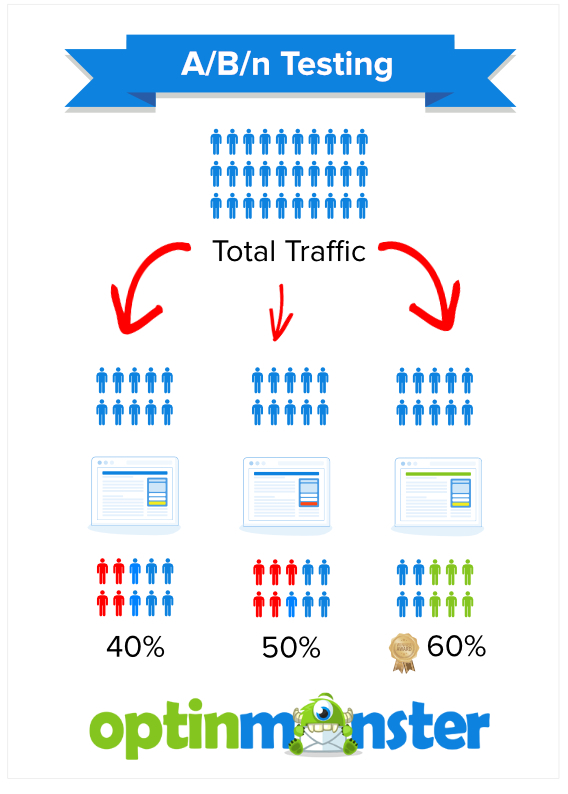
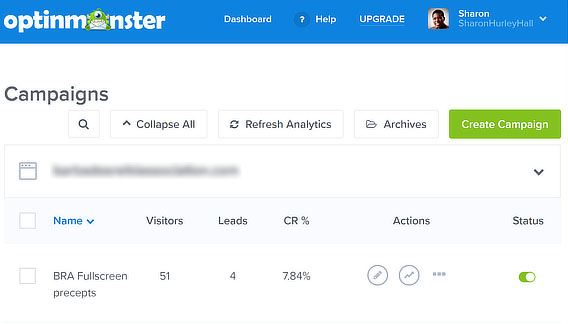

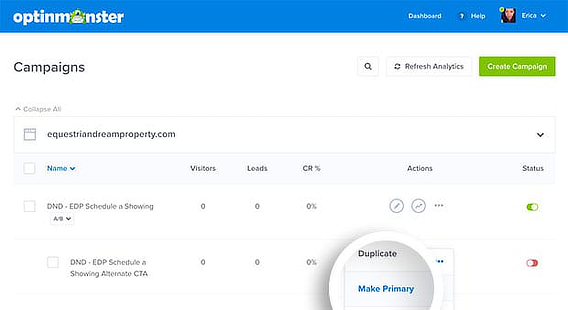
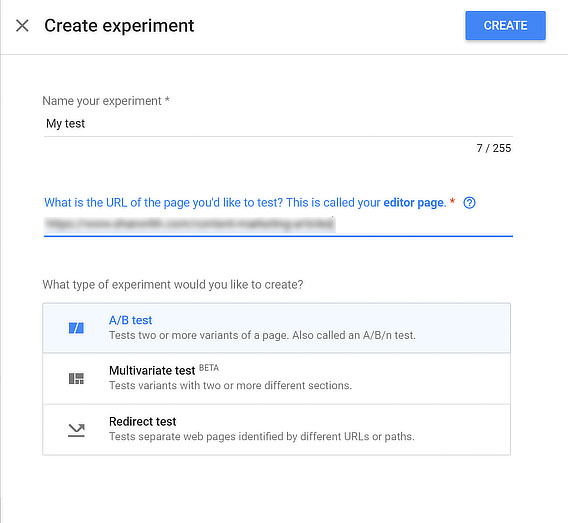
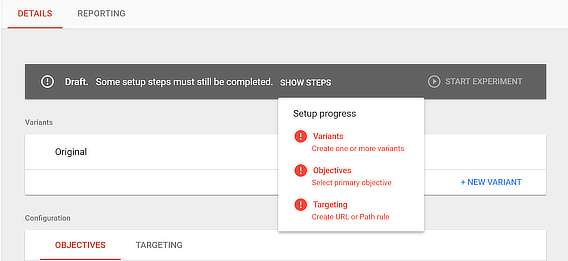
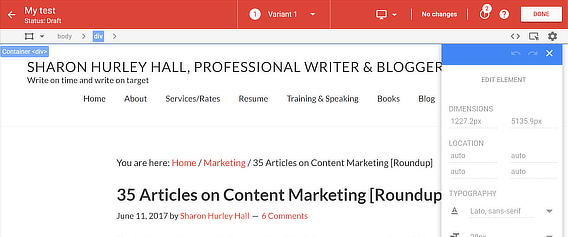
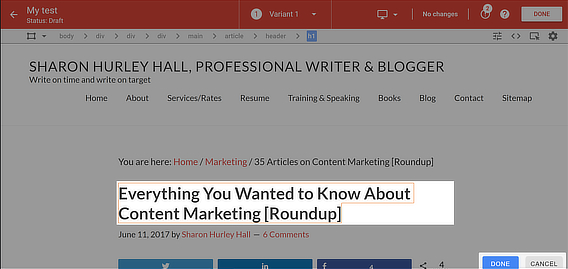
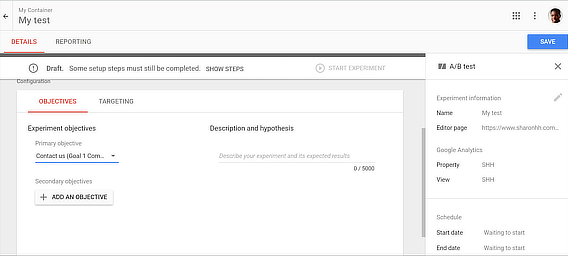
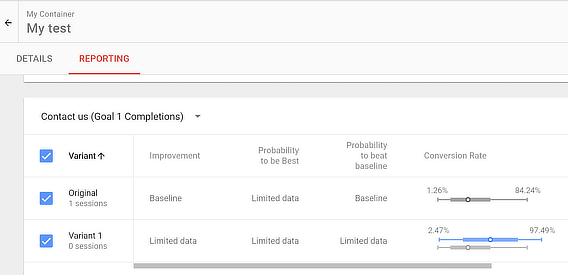
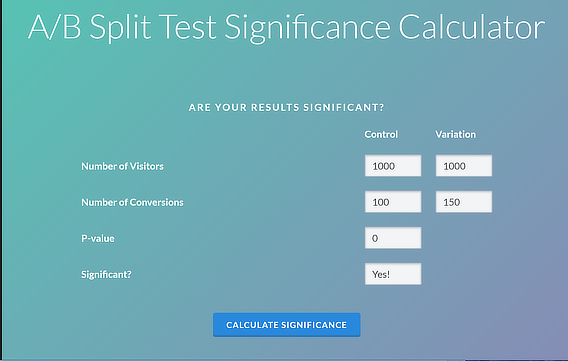








Add a Comment